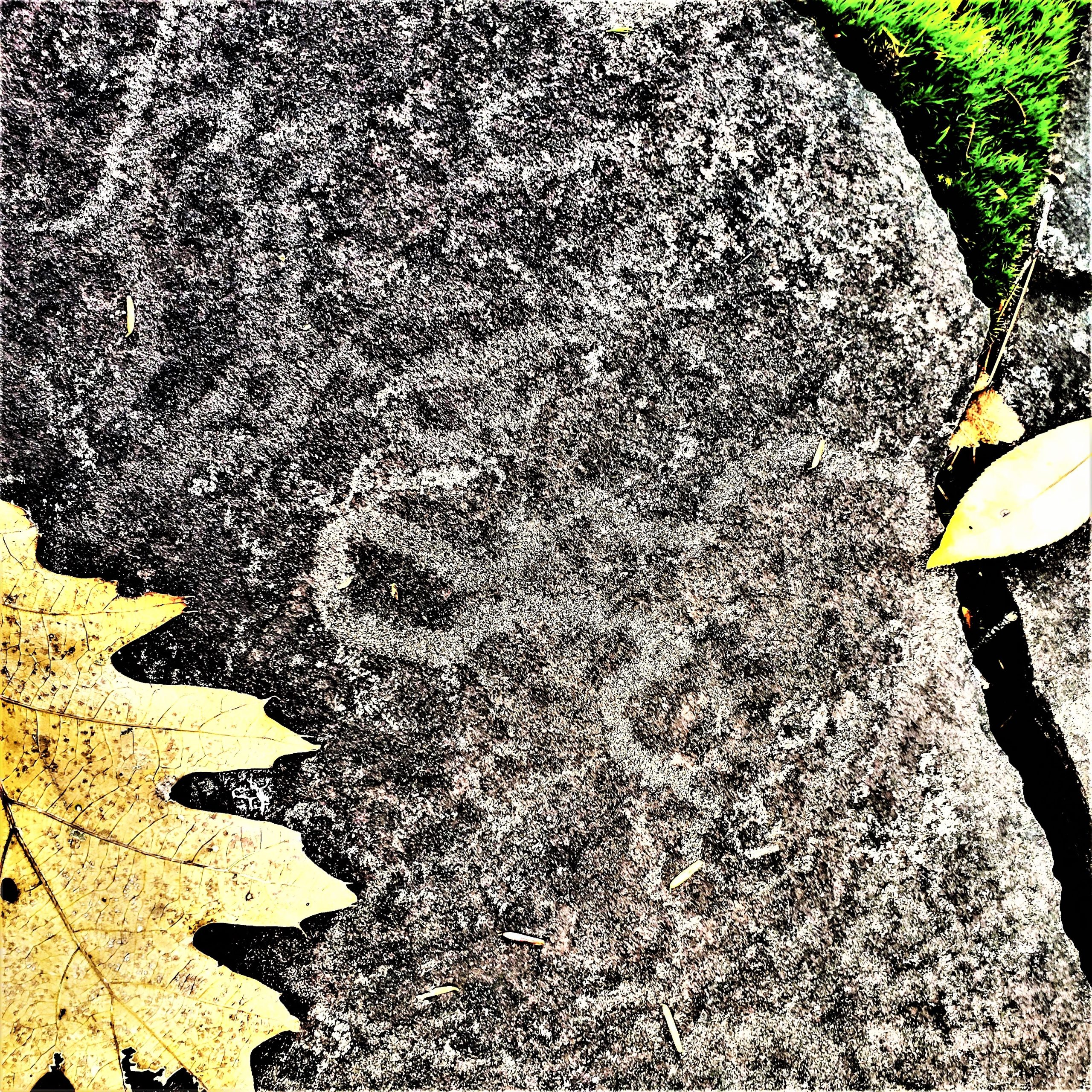THE CATSKILL GEOLOGISTS BY PROFESSORS ROBERT AND JOHANNA TITUS
Opus 40, A Devonian Home?
We always look into a sedimentary rock and see the sediment that lies within. At the Opus 40 quarry most of that sediment was sand. It has been cemented and thus petrified into the Catskill bluestone that we see all over the quarry today. But it was, long ago, soft wet sediment. The thick sandstones at Opus were mostly deposited in river channels, rivers of the ancient Catskill Delta. All these sands are hard cold sandstones today, but we always have to remember that these were once river channels and there were animals who called them home. We have not yet found any fossil shells or bones in the quarry, but we have found some other fossils. Take a look at our photo.
That’s an unusually dark sandstone for the Catskills; it’s a black sandstone with a large number of light-gray curvy patterns within it. What earth could those curves be? Well, paleontologists know them as trace fossils. They are, indeed, not shells nor bones. Instead, they record the behaviors of ancient organisms. From time to time, you leave footprints when you walk across wet grounds. Imagine if, somehow, those prints hardened into rock. Then your footprints would have become trace fossils. That’s not likely to actually happen but it does sometimes with invertebrate animals who live in soft sediments. That’s what happened here. Think about what you are looking at. About 380 million years ago, when these sands lay on a river bottom, animals squirmed around within those sediments and that left the marks. We geologists use the word burrowing to describe this. And that burrowing produced burrows. It should have been that they would never have been preserved; instead, floodwaters should have soon washed them all away. But that just did not happen. They remained, undisturbed as the years passed by. They were buried by thicker and thicker heavy sediments and, under all that weight, slowly hardened into the rock we see today.
But what were those animals, and what were they doing? That’s an interesting scientific question and it might seem one that is impossible to answer. But what does the evidence say? That evidence is in the color. Where the rock is dark that is because it is rich in biological material, mostly carbon, that’s the black stuff. Where the rock is gray, then there is much less biological material. And that is within the burrows. What happened? Maybe you can guess.
Those burrowing animals, as they worked through those sands, removed the biological material. They were consuming it as food. Who does this today? Worms do. The way to bet is that these are the burrows of ancient Devonian worms.Contact the authors at randjtitus@prodigy.net. Join their facebook page “The Catskill Geologist.” Read their blogs at “thecatskillgeologist.”

